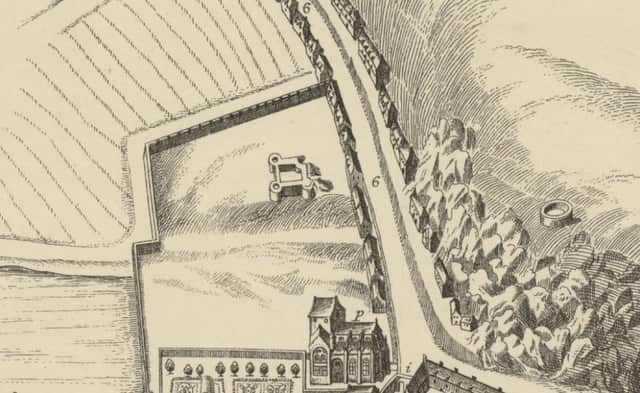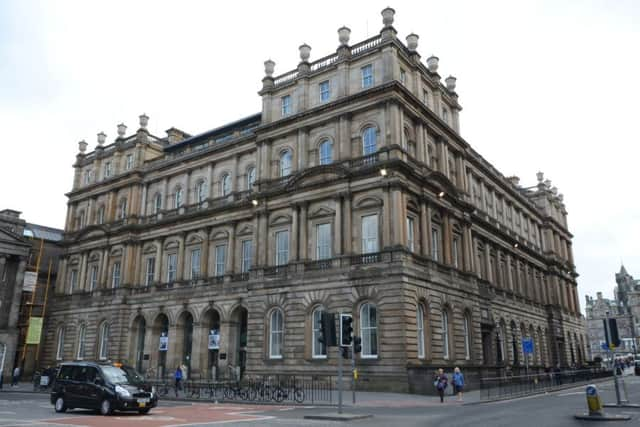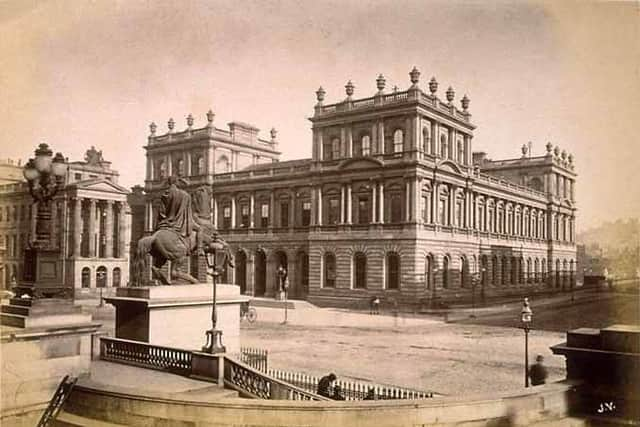Lost Edinburgh: The city centre's forgotten castle
This article contains affiliate links. We may earn a small commission on items purchased through this article, but that does not affect our editorial judgement.


Thought to have been built for and named after Sir John Dingwall, Provost of Trinity College Church, and Archdeacon of Caithness, between 1525 and 1532, Dingwall’s Castle stood for several hundred years close to the eastern end of what is now Princes Street.
The castle consisted of a large single tower set within a quadrangle of round towers at each corner – the style of fortification suggesting that it could be even older than many agree. It is initially thought to have provided a home for Sir John Dingwall during a time when Scotland’s nobility preferred to live in castles than in mansions and townhouses as in later centuries.
Advertisement
Hide AdAdvertisement
Hide AdThe castle stood on the land south of Multries Hill, just to the north east of the Nor’ Loch, at what is now Waverley Gate (the former G.P.O.). It was a dependency of the aforementioned Trinity College Church, infamously razed to make way for an expansion to Waverley Station in the 1840s.


The Lang Siege
During the siege years of 1571 and 1573, a protracted series of blockades fought over royal allegiance which saw much of old Edinburgh pummelled to smithereens, Dingwall’s Castle was used as a blockhouse – a military term for a fortified structure which allowed defenders to fire in multiple directions. Some years after this, the fortress was used as a prison, its days as a home for Edinburgh’s gentry consigned to history.
A state of ruin


When cartographer James Gordon drew up his ‘Bird’s Eye-View of Edinburgh’ in 1647, Dingwall’s Castle was shown to be in a semi-ruinous state, with only three of its round corner towers intact. Stones from the castle were being used to repair other buildings such as the nearby Trinity College Church, and from this point on, Dingwall’s Castle continued to decay. By the time the Orphans’ Hospital opened close to Trinity College Church in 1774, there would have been little visual evidence of the castle left, and as a result, no detailed images of the ancient pile, photographic or otherwise, are known to exist.
Waverley Gate
History records that fragments of the old castle walls were “still extant in a cellar in Shakespeare Square”. Shakespeare Square and the old Theatre Royal which its name was derived from, were flattened during preparation for the construction of the General Post Office in 1860. The latter underwent an extensive redevelopment in the 2000s to become Waverley Gate.
Advertisement
Hide AdAdvertisement
Hide AdCould remnants of Dingwall’s Castle still be lurking deep beneath the foundations of modern-day Waverley Gate? The evidence suggests not, but in a city like Edinburgh, famed for hiding subterranean secrets, just about anything is possible.
DOWNLOAD THE SCOTSMAN APP ON ITUNES OR GOOGLE PLAY